All about ceramic dishes
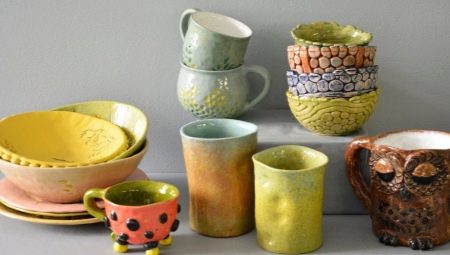
Eating food for a person is a very important process. But it is no less important what attributes of kitchen utensils are used in this case, in what utensils the food is prepared, with what accessories the table is served. Ceramic tableware remains one of the most popular and widespread categories.
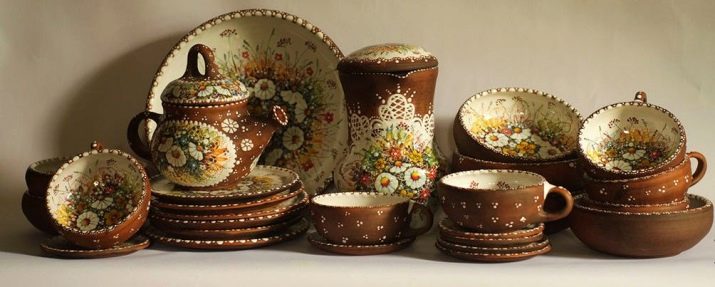
A bit of history
Most scientists believe that pottery dates back to the Neolithic period. It was then that many people began to lead a sedentary lifestyle, moved on to raising livestock and growing grain crops. And for a normal existence, dishes were needed. It was made from clay by firing. This made it possible to obtain sealed and durable containers for storing products of various consistency.
Making such utensils was more like modeling from plasticine. Various shapes were given with the help of the fingers. Interestingly, this was only a female trade.
At first, clay was fired on bonfires at a rather low temperature - about 600 degrees. Already with the development of this technology, special furnaces began to be made, where, by blowing in air, it was possible to significantly increase the temperature.
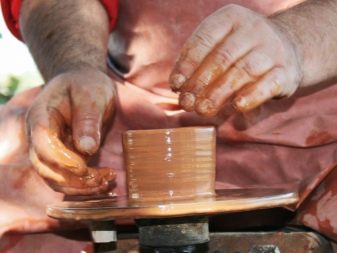

Given the ease of creation, it is clear that the first products of this type were very fragile. But in this case, people also found a way out and polished the dishes with stone or wood. As the creation of such tableware became more and more important in human life, the products began to be decorated. Usually it was about some kind of relief-type patterns. In addition, the containers began to be supplied with clay handles. Also, many models of cookware were made with a colored coating.The pigments for the paint were obtained from the same clay.
Pottery production flourished in China about 4000 thousand years ago. But in the form in which it is done today, it appeared here somewhere in the XIII century, at a time when the country was ruled by representatives of the Sung dynasty.
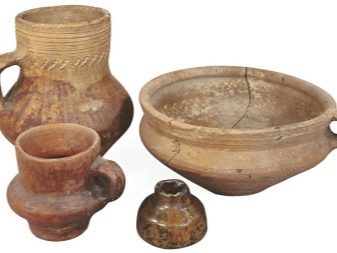
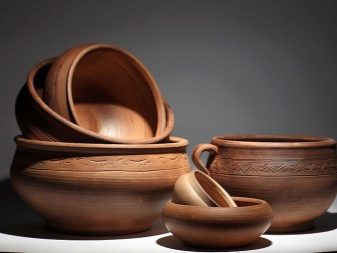
The Chinese kept the recipe for making dishes very carefully, and for almost 4 centuries the Europeans could not reveal it. Only in 1710, Johann Friedrich Boettger, a German court alchemist, after two years of experiments, managed to find a formula for ceramic dishes that was almost identical to the Chinese one.
After that, the first European ceramics factory was established in the German city of Meissen. It still exists today. It should be said that her products have always been in great demand, including among aristocrats from Russia. There were so many orders that special days were created in which the company produced products only for customers from the Russian Empire.
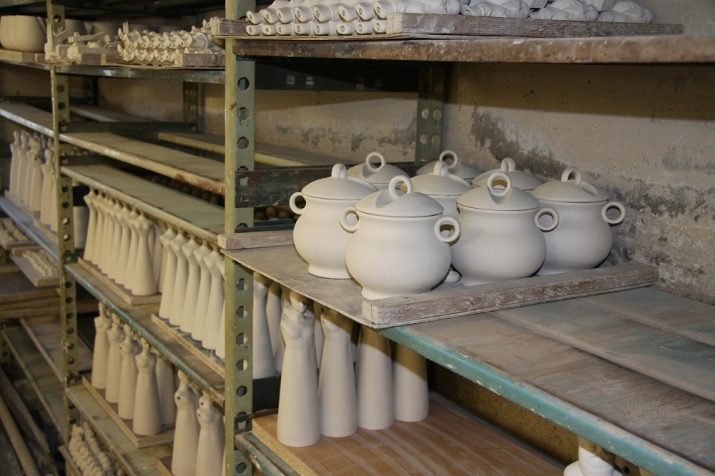
Advantages and disadvantages
Like any thing, ceramic dishes have both serious advantages and certain disadvantages. If we talk about the pros, then the following should be named:
- the ability to regulate the humidity and temperature of the products being prepared, which became possible due to the porous structure of the ceramics itself, which first absorbs moisture and then gives it back;
- no matter how long such dishes are used, scale does not form on them;
- it can store various dishes for a long time;
- food cooked in ceramic dishes has a rich taste and amazing aroma;
- it is completely safe from an environmental point of view, because it does not contain heavy metals, and when exposed to high temperatures, no carcinogens or toxins are released.
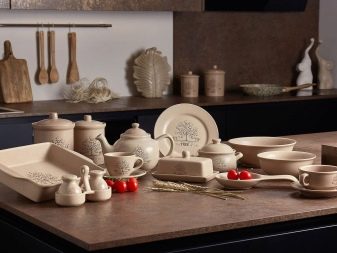
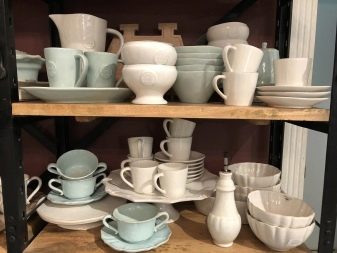
But it also has its drawbacks:
- has a very high fragility;
- absorbs fat well, which is why it is not easy to wash it;
- absorbs and retains the smell of cooked food for a long time, which may not please everyone;
- moisture has a very negative effect on such dishes due to the high porosity of the material.
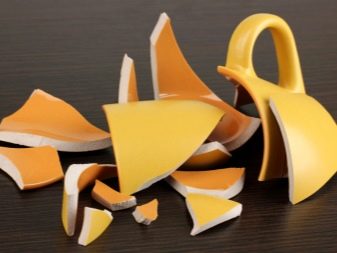
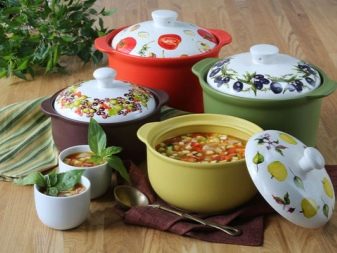
Varieties
It should be noted that the phrase "ceramic dishes" is a very broad concept, which includes various types of tableware, as well as its various models. If we talk about the types, then the main and most common are:
- porcelain;
- faience;
- terracotta.

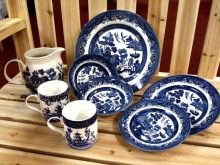
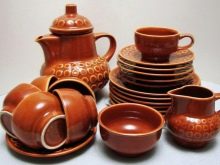
The porcelain version is created from white clay and has not only a small mass and an excellent aesthetic component. Such dishes are heat-resistant, sturdy and perfectly resist the effects of various substances. A clear, high-pitched sound is produced when lightly hitting the surface.
This solution keeps warm and cool for a long time and it can be called a kind of "thermos". Moreover, the dishes are very beautiful.
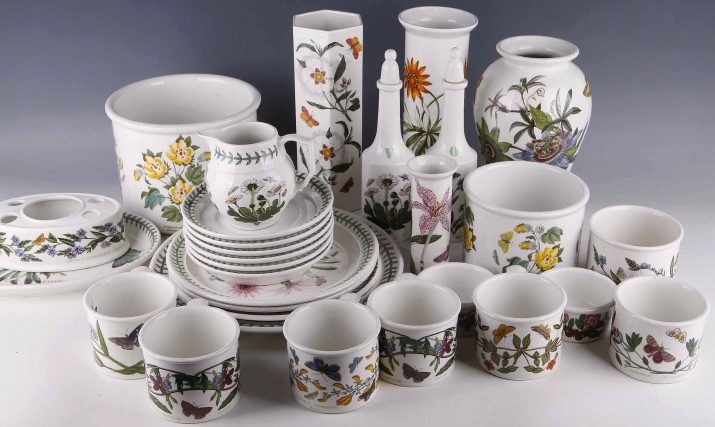
The faience version is also made of white clay, but its strength is less, as well as heat resistance. The porosity of such dishes is significantly greater, which gives rise to a more noticeable absorption of odors and moisture, in comparison with the same porcelain. The durability of such dishes is about 25% lower than porcelain. This is also due to the lower firing temperature.
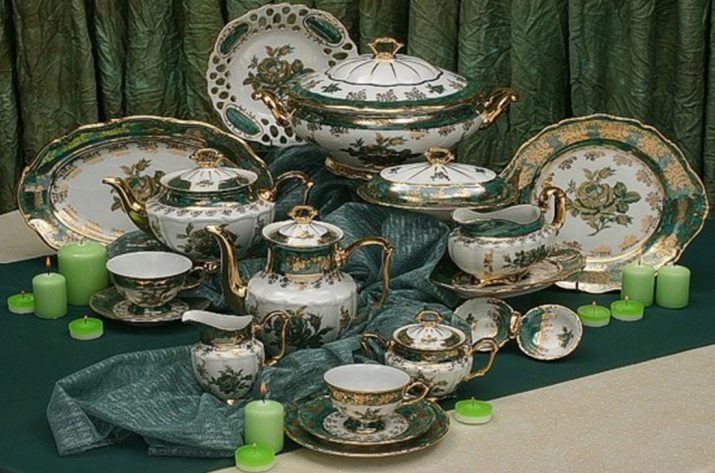
But terracotta dishes are made of red clay.... It is rarely glazed. After firing, its texture can become very varied - coarse-grained, fine, with complete or partial polishing. The color of these dishes can also vary, ranging from red to black. Today, such dishes have excellent moisture resistance, although this was not always the case.

Now let's talk in more detail about specific models of cookware of the type in question. The first category that I want to talk about is tureens and pots. The latter are usually used for cooking and serving hot snacks, and if they have a large capacity, then for cooking and serving hot meals.Various kinds of tureens are used to serve ready-made soups on the table, when a large number of people are served at once.
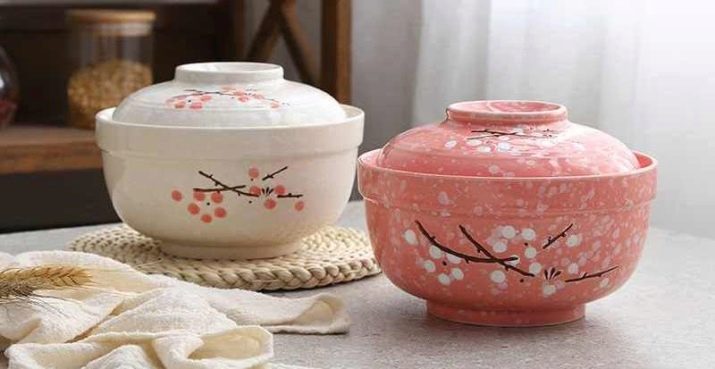
Another category is serving dishes and plates. Such ceramic solutions are usually used for serving tables in stylized enterprises. Manufacturers today offer whole sets of plates for table setting, as well as dishes for serving cold snacks.

There are also milk jugs, creamers, gravy boats and spice devices. The first two types of ceramic dishes are used to serve milk and cream for tea and coffee. Sauceboats are necessary for serving cold sauces and have a handle and a drawn-out spout. Spice cutters are needed for table setting.
If we talk about the minimum, then we are talking about pepper shakers and salt shakers. They can sometimes be supplemented with vinegar and oil serving bottles and toothpick cups.
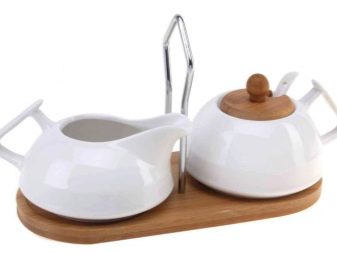
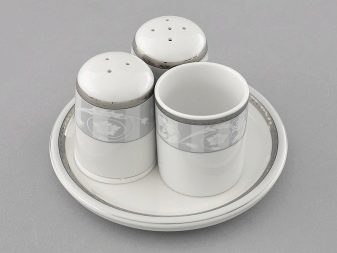
There are also special casserole ceramic baking dishes... These are baking dishes made of heat-resistant ceramics of various shapes, including various shapes with and without a lid. They can be served on the table on special wooden stands or in rattan baskets.
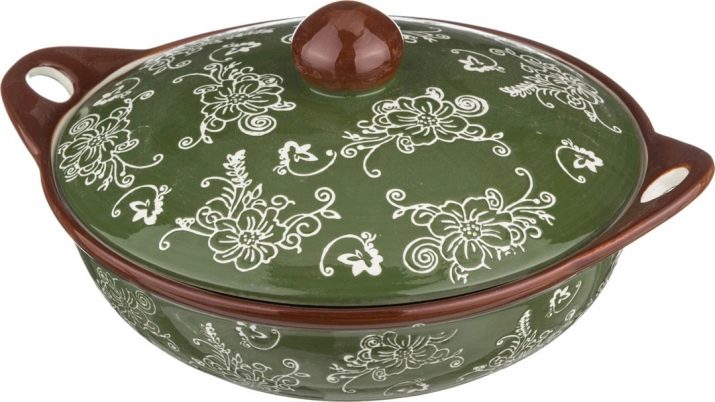
There are also special ceramic cocotte makers, which are made in the form of small pots with a long handle or without it and having a small volume. They are commonly used to prepare and serve hot snacks.
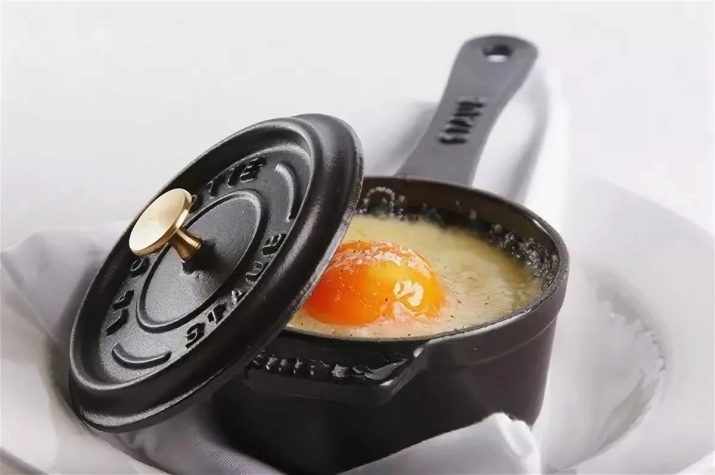
Very popular with housewives and ceramic salad bowls and bowls. An interesting solution would be salad bowls of the original form, which are made up into a single whole, in the assembled form they look like a dish. Salad bowls are used to serve natural vegetables, pickles, salads and marinades.
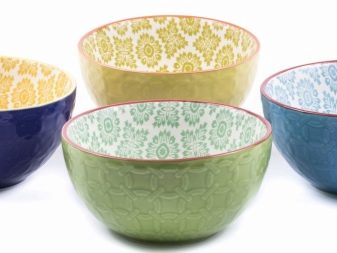
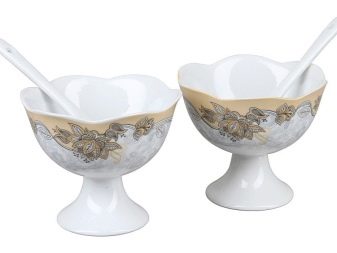
Another category is cups, sugar bowls, coffee pots and teapots. They are used for hot drinks and can be painted in a wide variety of colors.
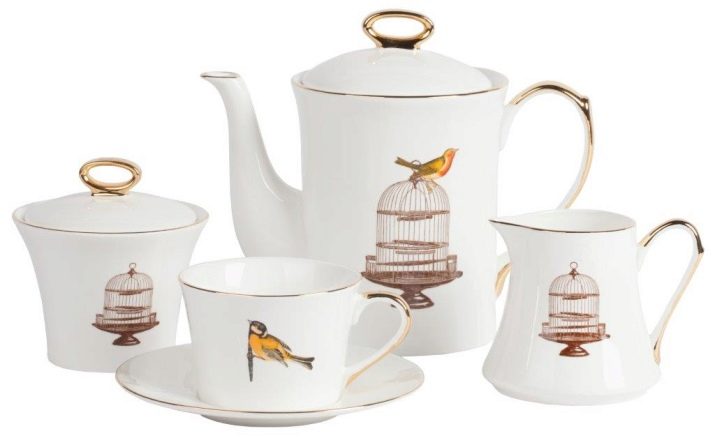
There are also ceramic fondue, which are usually made from heat-resistant ceramics and are complemented by sauce saucers, as well as special long forks. Such decision dates the opportunity to prepare and decorate a variety of dessert fondues.


Another type of dishes - ceramic plateau vaseswhich are commonly used for beautiful presentations of pastries.

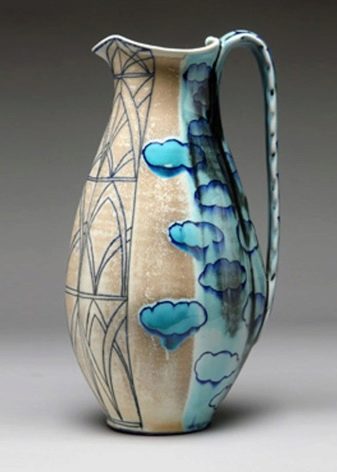
In general, as you can see, the range of ceramic dishes is very, very wide.
Manufacturers overview
Now it will not be superfluous to tell about the manufacturers of ceramic dishes, whose products are presented on the Russian market.
If we talk about domestic manufacturers, then today their products are very well represented on the Russian market. Known products of Russian production "Borisovskaya ceramics", the factories of which are located in the Belgorod region. The company's products are also familiar to many. "Mansion Ceramics", producing saucers, vases, cups, teapots, mugs. By the way, this brand also offers potential buyers handmade ceramics. It is, of course, more expensive, but the quality is beyond praise.
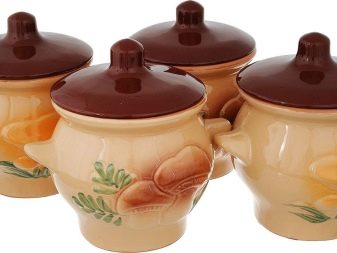

Many people will be interested in the brand's products "Tarusa ceramics", which dates back to 1974. The production is located in the city of the same name in the Kaluga region. The firm produces souvenirs, pots, flowerpots and ceramic dishes. Also of high quality.
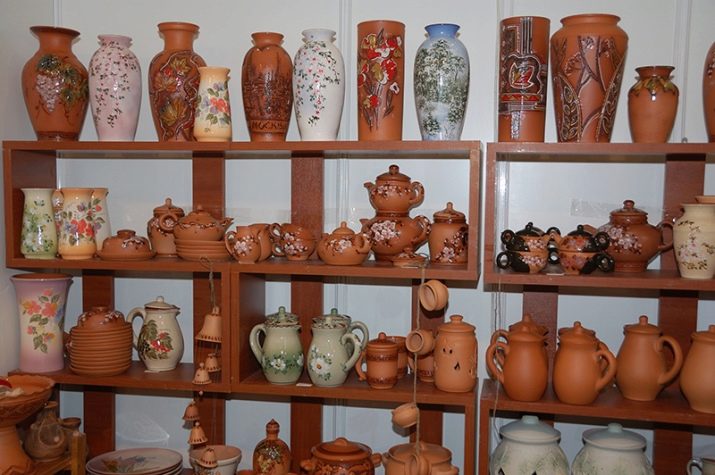
If we talk about the products of foreign brands, then Italian, French, Portuguese, Polish ceramics are presented on the domestic market. If we talk about the latter, then the company's products are very interesting. Boleslawiec from the Polish city of the same name. This is a unique manufacturer of ceramic tableware in terms of design, which is very popular not only in Russia, but also in its homeland.
Quite interesting products Dobrush porcelain factory, which is located in Belarus. Its products are distinguished by their pleasant design, high strength and good thermal properties.


Ceramic products from the company are quite interesting Cesiro... It is a brand from Romania that has established itself as a quality manufacturer of various types of ceramic products.
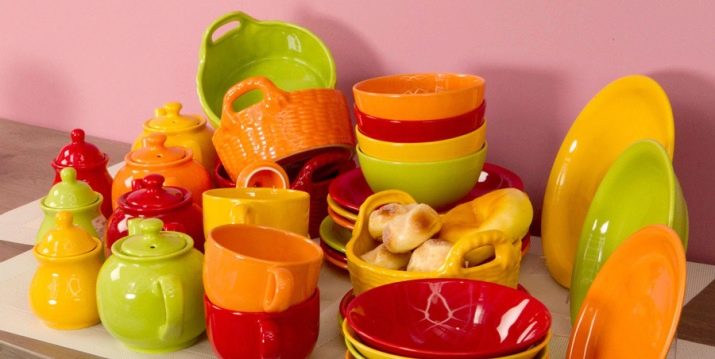
Products from Germany are very interesting. The most famous German brand, which also manufactures ceramic products, is Zwilling... This brand has existed for about 280 years and is considered the standard of German quality. His ceramic products will be a godsend for any housewife.
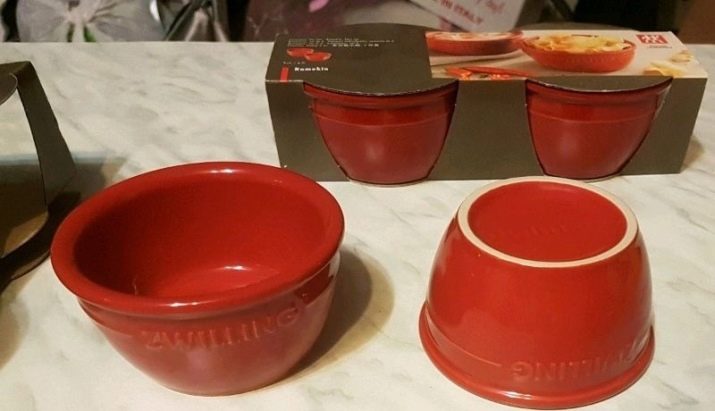
High-quality ceramic dishes are also made in Italy. Firm De silva known for its heat-resistant and very beautiful red clay cookware.

How to choose?
If you decide to purchase ceramic dishes, then it is better to opt for a complete set of dishes, because then all the elements that it contains will be of the same style and color. Today, there are sets in different styles, for example, Provence. And all the dishes can be white or colored. It looks beautiful and aesthetically pleasing.
When purchasing the dishes separately, you should also pay attention to the color, the presence of the pattern and the design. In addition, when choosing, you should carefully check the surface of each item for chips and various defects.
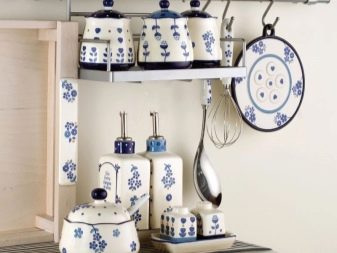
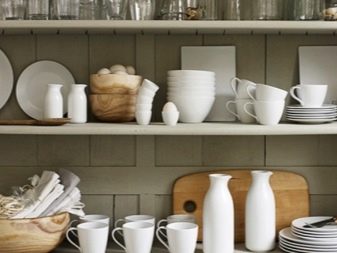
It will not be superfluous to decide on the type of ceramics. The most excellent option for the kitchen would be the earthenware option; this material is suitable for both a gas stove and for baking in the oven. Faience has an affordable cost, and dishes made of it are not afraid of temperature changes. There are also terracotta options, but they cannot be put on an open fire. Wipe thoroughly after washing.
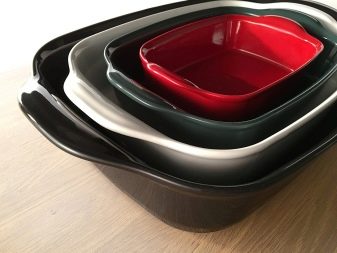
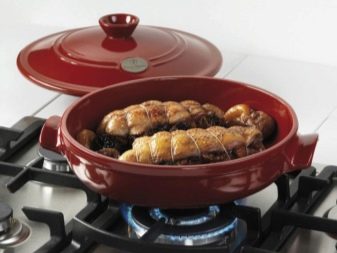
Operating rules
Ceramic cookware will be an excellent solution for gas, electric and glass-ceramic type hobs. And it is better to use such cookware on burners that will be slightly smaller than the diameter of the pot and pan. And for cooking in the oven, the dishes must have handles that can be removed if necessary.
In order for the dishes to be intact for as long as possible, one should avoid sudden changes in temperature. For example, avoid placing a cold skillet on an already preheated cooking zone, or putting food in it immediately after taking it out of the fridge or freezer.
It is best to use a silicone or wood spatula to stir the food. Metal spoons and knives should be discarded so that the surface is not scratched. The same can be said for abrasive cleaning. If you need to clean the surface, it is best to do it with a regular dishwashing detergent and sponge.
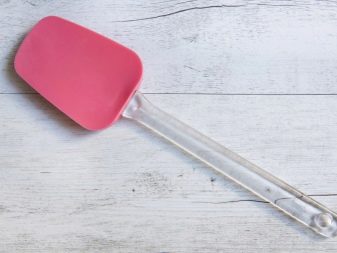

Care features
Caring for your ceramic cookware is pretty simple. And if you follow simple rules, the dishes will last a long time.
- Any ceramic cookware should be washed in warm water with a few drops of detergent added. In addition, such dishes must not be immediately placed in cold water after cooking. Otherwise, it may crack. The dishes can always be glued together, but the appearance will no longer be an attractive table.
- Never use metal sponges for grinding. This will damage the surface of such cookware.
- If the dishes are glazed, then you do not need to dry them out, because the moisture itself quickly evaporates on the clay. But if the dishes are unglazed, then everything is different. It must be wiped off after each wash and left in the open air until it dries completely. Otherwise, moisture will be on it for a long time, and when such wet dishes are heated, it may crack.


If you store food in such a dish, then it should not be covered with a lid, because this will cause an unpleasant odor. Especially if we are talking about wet ceramic without glaze.
For how to make ceramic dishes with your own hands, see the next video.








